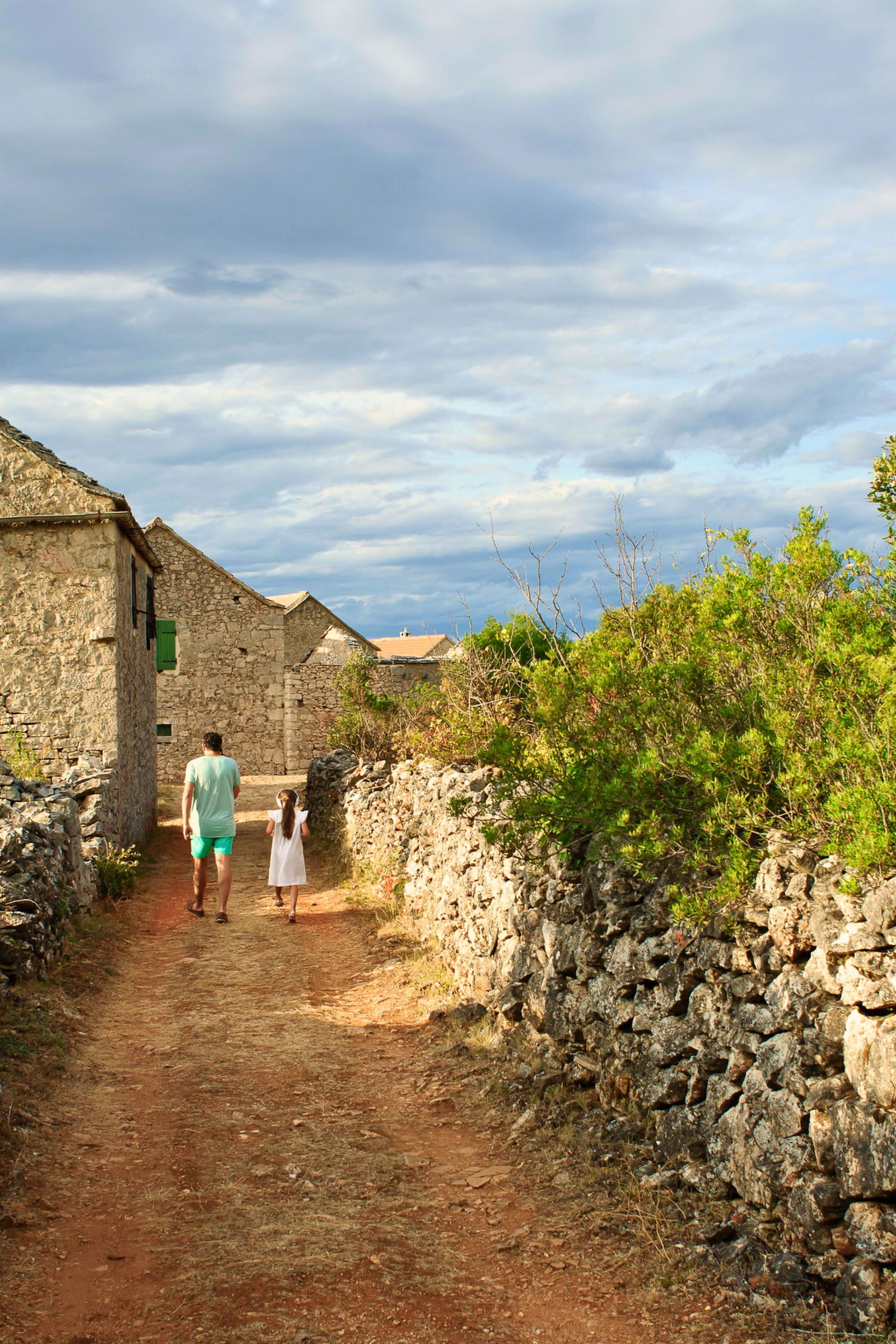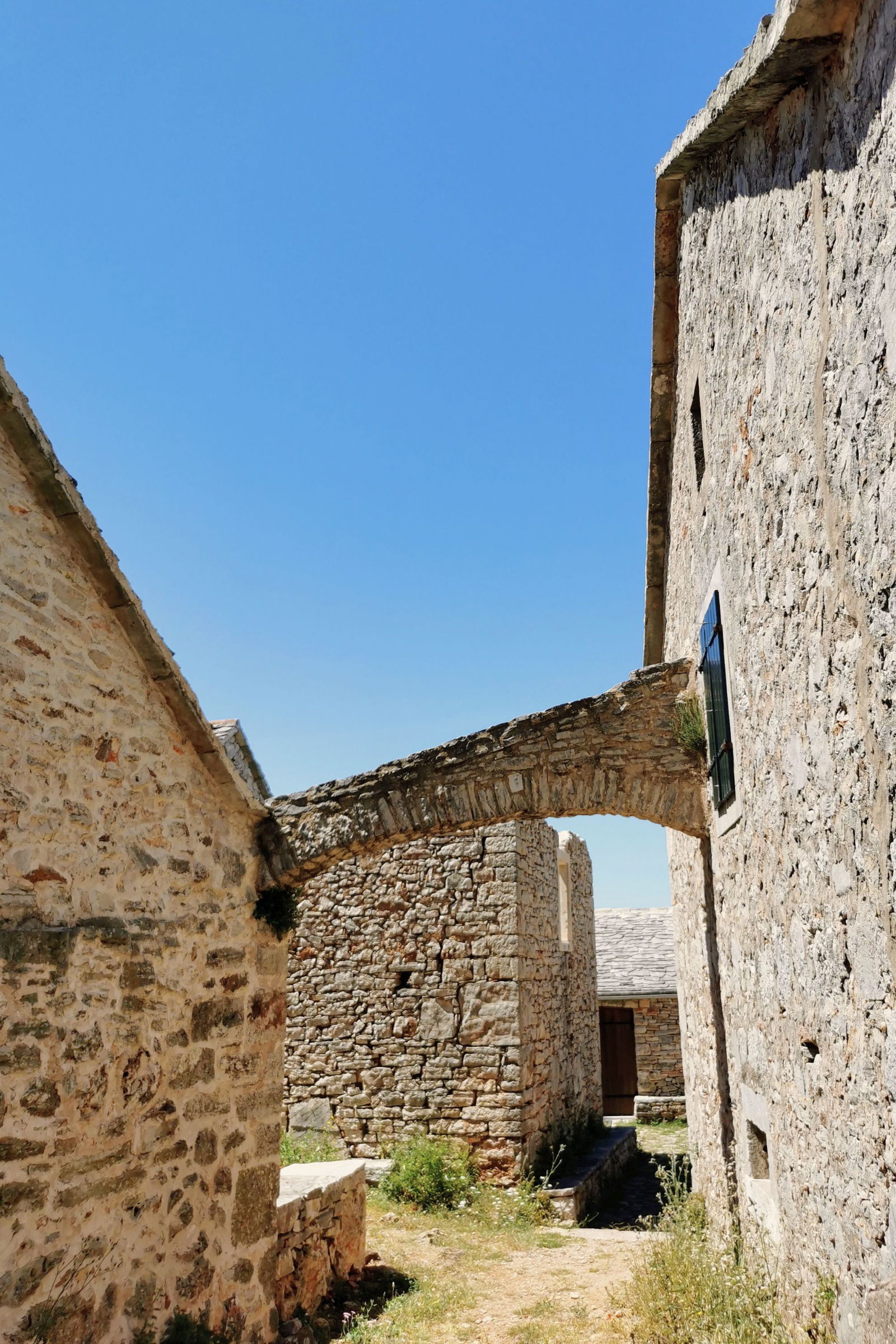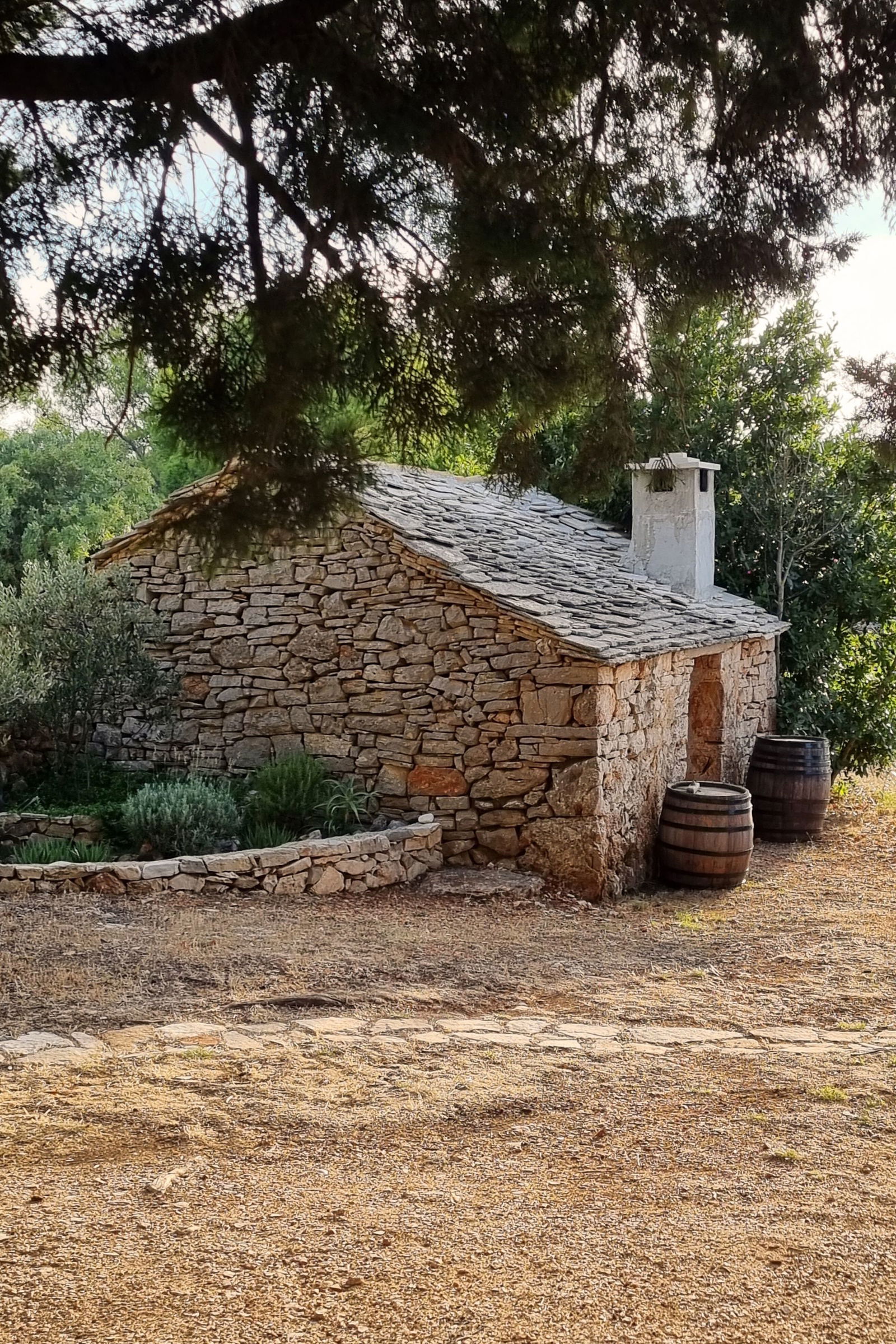Private Tour
Humac & Grapčeva Cave
Once a bustling pastoral village, the abandoned hamlet of Humac now stands as a pristine preservation of agricultural life as it once was. In fact, the entire village is listed in the Register of Cultural Monuments, with each stone house considered an ethnographic monument. Think ancient stone cottages and an even more ancient cave dating back to the Neolithic era, set against the backdrop of panoramic views from a vantage point 350m above sea level.

Itinerary
Your guide will meet you at Konoba Humac, and lead you down an old stone cart path, past overgrown vineyards and lavender fields, pointing out native plants and their uses in folk medicine all along the way to Grapčeva Cave, which dates back to the Neolithic era. It is a real treasure – a preserved piece of history, a place where the earliest life on the island started.
Down a steep path over the sea and through a low entrance protected by an iron gate, you will enter the round, spacious cavern filled with stalactites and stalagmites.

This is also where the oldest known depiction of a boat in Europe was discovered, and one of the archaeological sites establishing what is known as “Hvar Culture.” Far from cave dwellers, the people of Hvar Culture were an ancient nautical civilisation who used this cave as a site for "funeral rituals, leaving evidence of their presence with sophisticated – and quite attractive – ceramics.

After delving into the deep past, explore more recent centuries in the ethnovillage of Humac itself, a well-preserved example of the seasonal settlements that flourished in the arduous but lucrative years of the 19th century, when Hvar produced a significant portion of Europe’s wine and aromatic oils. Although founded in the 1600s, Humac was greatly expanded in these “boom years” when Continental wealth fed a demand for the island’s agricultural products.

Although residents primarily lived in the nearby village of Vrisnik, they would migrate to Humac during major agricultural seasons and live in the stone houses built with the ancient dry technique, with some retaining architectural remnants of the former sharing of goods – stone gutters bridging the passageways between houses, through which rainwater would flow into a common gutter or well.
Today, they stand as testament to the island's agricultural heritage and prosperous past.

Although now without any permanent residents, Humac was once a centre of human habitation spanning centuries. The village is blanketed with simple dry-wall stone houses, built without mortar, many of which have foundations that date back to the early Stone Age.

The tour also includes exclusive access to the otherwise-closed museum in Humac with its ethnographic collection, the village church of St. John and Paul, and the ancient distillery of essential herbs.

What’s included
- Experienced local guide
- Informative commentary
- Entrance fee to the church, museum, and lavender distillery
- Private guided experience
What to bring
- Water
- Comfortable trainers/sneakers
- Sunscreen
- Sunglasses and hat
Important notes
Good physical condition and fitness is required for the descent to Grapčeva Cave.
Terms
For bookings of this Experience made more than 60 days in advance of your arrival date at your villa, the following conditions apply:
- A booking deposit of 50% of the total booking price (including all fees and taxes) is due for payment at the time of reservation.
- The remaining balance payment of 50% of the total booking price (including all fees and taxes) is due for payment no later than 60 days before your arrival date at your villa.
For bookings of this Experience made 60 days or less in advance of your arrival date at your villa, the following conditions apply:
- Payment of 100% of the total booking price (including all fees and taxes) is due for payment at the time of reservation.
This Experience may be cancelled with a full refund within 48 hours of the scheduled start time.
Please read our full Experience booking terms before booking.
KEY TAKEAWAYS
Meeting Point
Konoba Humac, Humac
Timings
By appointment
Duration
2 hours
Group size
Up to 8
Pricing
€75 per group

Experiences are exclusively available to our guests
To book any of these unique enriching additions, contact us.